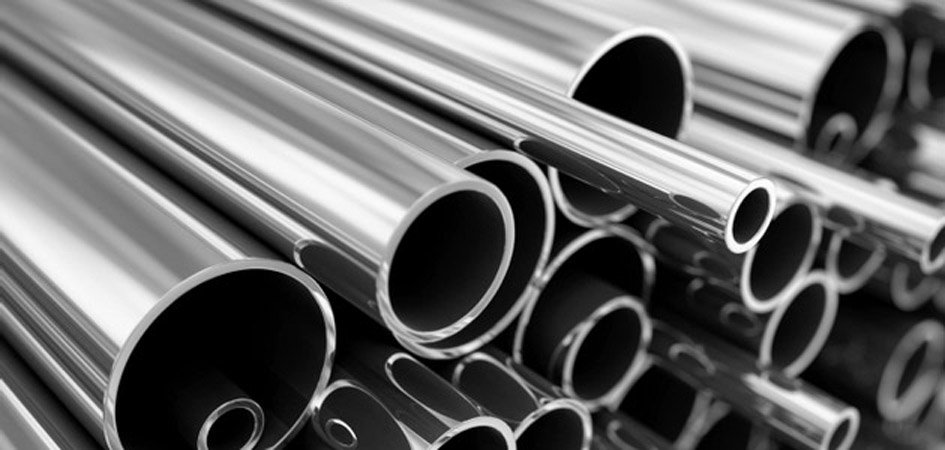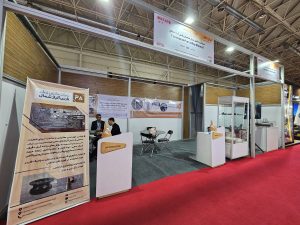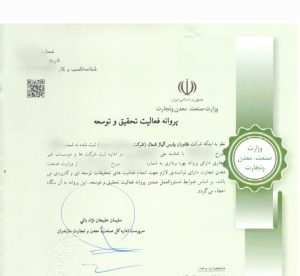Inconel is a group of nickel-based superalloys that are highly resistant to corrosion and oxidation under high temperature and high pressure operating conditions. At high temperatures, a stable, stable, and passive layer of oxide forms on the surface of Inconel alloys, which prevents further corrosion.
Inconel is a group of nickel-based superalloys that are highly resistant to corrosion and oxidation under high temperature and high pressure operating conditions. At high temperatures, a stable, stable, and passive layer of oxide forms on the surface of Inconel alloys, which prevents further corrosion. Inconel maintains its strength over a wide range of temperatures. This alloy has a special application in situations where aluminum and stainless steel can not be used due to the possibility of creep at high temperatures.
The Inconel brand is registered by Special Metals Co. This alloy is a family of solid-soluble nickel-chromium base alloys and is generally used for high temperature applications. Inconel is also called “inco” and “iconel”. Inconel’s other trademarks include Inconel 625, Chronin625 Altemp 625, Haynes 625, Nickelvac 625. This alloy was first developed by a research team in the United Kingdom.
Inconel alloys
Inconel alloys are resistant to oxidation. These alloys have the ability to maintain structural integrity at high temperatures. There are several Inconel alloys. These alloys are used in cases that require properties that do not easily lead to severe corrosion or water corrosion and corrosion cracking. While any change in Inconel has unique features. This makes inconels effective in a variety of conditions, most of which are used in the chemical industry.
Inconel is often used in marine applications due to its extreme resistance to sodium chloride (salt) at various temperatures. Therefore, Inconel is a good choice for processes that use a salt plant or salt plant near the ocean. It is also used for cases where the temperature is very high, such as heat treatment. It is a substance that is used specifically for some of the most difficult conditions. Even compared to stainless steel, Inconel alloy has an extremely high heat resistance.
Alloy inconel has grades 600, 601, 625, 690, 718, 722, and 903. These alloys are widely known for their corrosion resistance in both high temperature and water environments. Each alloy has its own advantages, and each is used in a number of different industries. The Inconel 600 and 601, for example, are both effective tools in the chemical and food industries, while the Inconel 718 is more commonly used in the aerospace industry in spacecraft and rocket engines.
Features of Inconel alloys
The characteristics of Inconel alloys that distinguish it from other superalloys are as follows.
Resistance to acids such as sulfuric, phosphoric, nitric and hydrochloric.
There is almost no risk of cracking due to chloride corrosion of this alloy. Excellent mechanical properties at both very low and very high temperatures.
Excellent resistance to pitting corrosion, slit corrosion and intercrystalline corrosion
High resistance to oxidation at high temperatures
Applications of Inconel Alloys
Chemical and petrochemical processing
Parts that require high mechanical pressure and seawater exposure
Torch of offshore oil systems
Gas turbines, rocket engines and space industries
Pollution control equipment
Nuclear reactors
Inconl 600
Inconel 600 is a nickel-chromium alloy that shows high resistance to corrosive elements. In high temperature conditions, Inconel 600 is strong against chloride ion cracking or oxidation. This alloy is also resistant to corrosion caused by pure water. However, Inconel 600 is used in the food industry and nuclear engineering. Because these alloys retain their structure in applications that create irreversible corrosion.
Inconel 601
This Inconel, like the Inconel 600, is resistant to various types of corrosion and oxidation at high temperatures. However, unlike the 600, this nickel-chromium alloy also contains aluminum in its composition. This added element provides excellent properties in very hot environments. Inconel 601 has a high thermal resistance, which is why it is used in gas turbine components and petrochemical processing equipment.
Inconl 625
Inconel 625 differs from many other Inconel alloys in that it combines significant amounts of nickel, chromium and molybdenum. This grade also has neobium. As a result of using these elements in Inconel composition, its strength increases. (Without heat treatment on them). Inconel 625 is resistant to pitting corrosion.
What is the difference between Hestlevi and Inconel? Both Inconel and Hesteloi have high corrosion resistance and durability. They cost more than stainless steel, but because of their reliable performance in harsh environments, nickel alloys are preferred for applications such as geothermal, nuclear, aerospace.
What is the melting point of Inconel and Hesteloi?
The higher melting point of Inconel is 2600 – 2500 degrees Fahrenheit (1390 – 1425 degrees Celsius) which Hastelloy melting point.
It has 2460-2410 degrees Fahrenheit (1320-1350 degrees Celsius). Nickel alloys lose their strength before they reach the melting point, so it is generally recommended to maintain a normal temperature below this range.
Specification
- Excellent oxidation and corrosion resistance at high temperatures; Therefore, they are very suitable for working in environments under high pressure and kinetic energy.
Good corrosion resistance in acidic environments such as sulfuric and phosphoric acids
Excellent mechanical properties in hot and cold working environments such as high yield stress (even at temperatures close to 750 °C), high tensile strength, fatigue resistance, and good creep resistance.
The high-temperature strength of Inconel, depending on its type, is related to the strength of the solid solution or the strength of the sediment. In all types of sediment aging or hardening, small amounts of niobium combine with nickel to form the intermetallic compound gamma prime (Ni3Nb). Gamma prime forms small cubic crystals that inhibit effective slippage and creep at high temperatures. The formation of these crystals increases with time.
Inconel machining
The unique mechanical properties of icons make them machined to make parts used in industry, and these metals, like most superalloys, are classified as materials with poor machining properties. High stiffness and strength during machining and at high temperatures in the cutting area cause the plastic deformation of the cutting edge of the tool. In addition, these nickel-based alloys contain highly abrasive impurities such as carbide particles (which increase creep resistance) and also tend to harden during machining, causing tool wear; Therefore, machining these alloys by traditional methods is very difficult and achieving a suitable surface quality in some cases is almost impossible. In these cases, non-traditional methods such as electrical discharge machining (EDM) and electrochemical machining (ECM) can be used.
Inconel welding
The welding process of most Inconel alloys is difficult due to cracking and microstructural separation of alloying elements in the temperature affected zone (HAZ). To overcome this problem, several special alloys such as Inconel 625 and Inconel 718 have been designed and developed. The most common methods of welding icons are tungsten arc welding and electron beam welding. Lately, new innovations in pulsed microliter welding have also been considered.
applications
- Automotive, arms, aerospace industries
- Common in the manufacture of gas turbine blades
Combustion chamber in jet or turbine rocket
- Offshore oil rigs
- High-pressure valves and fittings for tankers
- Chemical and petrochemical industries and processes
- Turbochargers
- Parts of nuclear equipment such as nuclear reactors
- Pollution control equipment
- Food industry equipment
- Military equipment and advanced defense industries
Inconel alloys
- Inconel 600: Solid solution solidification
- Inconel 625: Acid resistant, good welding capability
Inconel 690: Low in cobalt and low in core applications and resistivity
- Inconel 718: has the strength of gamma double prime phase, also has good welding capability
Inconel 751: The amount of aluminum has been increased to improve the fracture toughness at 1600 Fahrenheit.
- Inconel 792: To improve the high temperature corrosion properties, the amount of aluminum element has been increased. Used in the construction of gas turbines.
- Inconel 939: It has strength by gamma prime phase and has good welding capability.
Introducing Inconel 738 alloy
Inconel-738 (IN-738) superalloy is a non-magnetic nickel-based alloy superalloy containing 60% nickel, 16% chromium, 8.5% cobalt, and very small amounts of other metals such as aluminum, titanium, and tungsten. . This superalloy was produced in 1967 at the Paul DiMerica Research Laboratory (PDMRL). The purpose of developing this superalloy was to produce a cast alloy with a stable structure that includes the strength of Inconel 713 superalloy along with the corrosion resistance and oxidation of the udimet-500 alloy. Depending on the amount of carbon in it, this superalloy can be divided into two categories: low carbon (IN-738LC) with a carbon content of 0.9 to 0.18% and high carbon (IN-738C) with a carbon content of 0.15 to 0.20%. Divided. Optimal resistance to oxidation and corrosion and excellent high temperature mechanical properties of Inconel 738 low carbon alloy have led to its widespread use in various industries. It is mostly used in industries related to gas turbines such as power generation, petrochemical, aviation and so on. Applications of IN-738LC include sensitive parts of gas and air turbines such as fixed and movable blades, discs, integrated wheels, combustion chambers, etc.
Inconl 625
In addition to being a corrosion-resistant alloy against a wide range of corrosive materials, the Inconel 625 also has a high mechanical strength (580 MPa yield strength equivalent to the mechanical strength of hardened MO40 steel). Due to the high percentage of nickel in the Inconel 625 composition, this alloy is resistant to one of the most common types of corrosion in the oil and gas and petrochemical industries, namely chloride stress corrosion cracking (Cl-SCC). Inconel 625 also shows excellent resistance against pitting and crevice corrosion.
Another advantage of Inconel 625 is its unique welding capability. Due to the stability of the Inconel 625 crystal structure at high temperatures and the preservation of granulation after re-melting, this alloy is a suitable option for applications where the need for weld overlay is required. This advantage makes the parts made of this alloy have good repairability.
Inconel 625 is the most widely used nickel-based alloy in the oil, gas and petrochemical industries, and in our country, industrialists active in this field are very interested in using this alloy. High demand in the country has made Inconel 625 easily available in the domestic market.
Welding
Welding of Inconel 625 alloy is done with TIG, SMAW and GMAW processes. In welding Inconel 625 to homogeneous alloy and other alloys with different material, Inconel 625 filler or 112 electrode (with nickel-chromium-molybdenum combination) is used. In this case, the deposited weld metal with high strength (similar strength to the base metal), has a high resistance to corrosion and oxidation in the cryogenic temperature range up to 982 degrees Celsius. In TIG and SMAW welding processes, Inconel 625 filler (welding parameters similar to welding of other nickel-chrome fillers) is used, and in GMAW process, 112 electrode is used. The slag from melting electrode 112 has a high hardness that can be easily removed by impact. After welding this alloy, no post-heating process is required to maintain strength and ductility.
Inconel 718:
It is one of the nickel base superalloys. Having the appropriate strength up to 760 ° C is one of the most important features of Inconel 718. In addition to having the general properties of superalloys, Inconel 718 has high strength and impact resistance. Due to its resistance to corrosion, oxidation and creep, Inconel 718 is used in the manufacture of jet engine parts, turbine blades, thermal equipment for power plants and the petrochemical industry.





